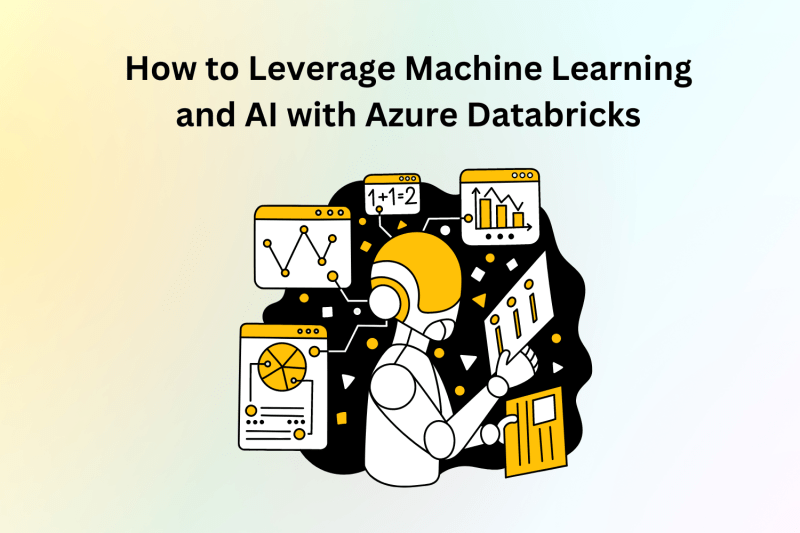The combination of AI and Machine Learning (ML) has become an asset in the data science and analytics industry. Azure Databricks is an analytics platform that unifies data processing and is based on Apache Spark. It offers a strong foundation for incorporating AI and machine learning into existing processes. This blog discusses Azure Databricks and its features and uses in analytics and machine learning. It is always essential to keep updated and continue learning with certifications such as Azure Certification to become experts in cloud technologies.
Introduction to Azure Databricks
Azure Databricks emerges when big data is combined with Artificial Intelligence. Data science, business analytics, and data engineering can all work together on this one unified platform. Let’s see how to use Azure Databricks for AI and machine learning projects.
Step 1: Setting Up Azure Databricks Workspace
Make an account with Azure Databricks
Start by going to the Azure portal and creating an Azure Databricks account. Just follow the on-screen instructions to set it up correctly.
Launch Databricks Workspace in Azure
Start up the Azure Databricks environment after you’ve created an account. This team setting has code development notebooks, computing clusters, and dependency management libraries.
Step 2: Discover Notebooks in Azure Databricks
Create a Notebook
To begin, open the Azure Databricks workspace and create a new notebook. Notebooks are great places to write and execute code since they are interactive and allow collaboration.
Choose a Programming Language
Python, R, and Scala are just a few of the languages that Azure Databricks is compatible with. Choose a language that fits the bill for any artificial intelligence or machine learning project.
Step 3: Import Data into Databricks
Import Data into Databricks
Import your dataset using Azure Databricks. Multiple techniques exist for accomplishing this, including file uploading, connecting to Azure Storage, and integrating with other data sources.
Data Preprocessing
Clean, transform, and aggregate data using Databricks notebooks for data preprocessing. Doing so will guarantee that your dataset is prepared to be used in developing machine learning models.
Step 4: Build and Train Machine Learning Models
Choose a Library for Machine Learning
Popular machine learning libraries like Scikit-Learn, TensorFlow, and PyTorch are supported by Azure Databricks. Pick a library that fits the needs of your project.
Create Machine Learning Models
Use Databricks notebooks, a collaborative workspace, to create code for constructing and training ML models. You can see the code run in real-time and see the outcomes visually.
Step 5: Run Models into Action and Analyse
Choose a Method for Deployment
Whether you choose a REST API, batch jobs, or interaction with Azure Machine Learning, Azure Databricks has you covered when it comes to implementing machine learning models. Choose the deployment strategy that works best for your application.
Scale with Azure Machine Learning
Scalability and advanced model management are yours with an Azure Databricks–Azure Machine Learning integration. You can take advantage of Azure Machine Learning features without leaving the Databricks environment thanks to this connection.
Step 6: Monitor and Optimise
Apply the Monitoring Tools from Databricks
To keep tabs on how well your machine learning models are doing, use the built-in monitoring features in Azure Databricks. Track KPIs, look for unusual behaviour, and fine-tune as needed.
Iterate and Improve Models
One of the fundamental principles of machine learning is continuous progress. To keep your models up-to-date and accurate, iterate on them depending on feedback, findings from monitoring, and changing data trends.
Step 7: Collaborate and Share Insights
Collaborate in Databricks Workspace
Get your team members on the same page by sharing notebooks, code, and insights using Databricks’ collaboration tools. Innovation is fostered, and project timelines are accelerated through collaborative development.
Visualise Results
Make beautiful charts and graphs using Databricks’ visualisation features to effectively convey your machine learning insights. When communicating complicated results to stakeholders, visualisation becomes crucial.
Conclusion
Azure Databricks is an innovative platform that can use AI and machine learning. An all-inclusive environment for end-to-end analytics solutions is provided by Azure Databricks, which includes data pretreatment, model building, deployment, and monitoring. Keeping up with the latest innovations requires a commitment to lifelong learning, investigation of cloud platforms, and practical expertise with modern analytics tools.








